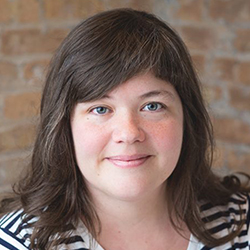The information you will be accessing is provided by another organization or vendor. If you do not intend to leave our site, close this message.
D-SNP home page > Health tips & tools > What to do before you quit smoking
What to do before you quit smoking
Some of the most important steps to quitting smoking take place before you light your last cigarette. This guide can help you plan for — and maintain — your new smoke-free life.
 By Kate Rockwood
By Kate Rockwood


Are you planning to quit smoking? Congratulations. That’s the first step toward putting the habit behind you for good. And while quitting smoking is far from easy, it’s definitely possible: 3 out of 5 American adults who ever smoked have quit.1
For your best shot at quitting successfully, you need a good plan — don’t wing it. With that in mind, here’s a road map for what you can do in the days before your quit date. Plus, we offer advice on how to navigate your first smoke-free month to help make it easier to stick with your healthy decision.
7-14 days before you quit
This is the time to mentally prepare to quit smoking. You’ll also want to get your support system and supplies in place.
- Set your quit date. Choose a date to quit smoking and circle it on the calendar. It shouldn’t be more than two weeks into the future. It should also be as low-stress a day as possible. In other words, don’t quit on the same day you’re moving to a new home or interviewing for a job.
- Tell your friends and family about your plan to quit. Getting support from loved ones can help you stay on track. They want to help you, so be sure to let them know what you need.
For example, do you want them to check in and ask how it’s going? Do you want to do things together to help take your mind off smoking, such as going for a walk or watching a movie? Or do you just need their patience for those times you might get grumpy?2
- Write down your reasons for quitting. Take this time to put the reasons you want to quit on paper, says Anne Roupas, LCSW. She’s a tobacco treatment specialist with the No Smoker Left Behind program at the University of Chicago Medicine.
Carry a copy of your reasons wherever you go. Leave another copy in a noticeable place at home, such as on the refrigerator. Reminding yourself why you’re quitting will help you stay motivated.
- Talk to your provider about quit-smoking aids. Quitting cold turkey isn’t your only option. And in many cases, it isn’t your best option. Your doctor might recommend nicotine replacement therapy (NRT) products such as patches, gums and inhalers. Using an NRT has been shown to up your chances of quitting by 50 percent to 60 percent.3 Or your doctor may prescribe medications such as varenicline (Chantix®) or bupropion (Zyban®).
Many NRT products, including gums and Chantix, are designed to be used for 12 weeks. Talk to your doctor if you want to continue taking them longer.
- Practice not smoking. It can feel overwhelming to quit a long-standing habit almost overnight. So treat this time as a rehearsal for your official quit date. The American Cancer Society recommends picking a few of your toughest smoking triggers — such as your morning coffee or commute home from work. Then try not to smoke during those times.4
- Join a quit-smoking program. Hospitals often offer smoking-cessation programs. You can also explore the programs at Smokefree.gov or the American Lung Association. Depending on your schedule and needs, there are text-based programs, in-person group clinics, online communities and more.5,6
1 day before you quit
Spend the day before your quit date getting rid of anything related to your smoking habit. The fewer temptations and reminders, the better.
- Clear out your house and car. Toss all your cigarettes, lighters, matches and ashtrays from any location where you smoked. Don’t be tempted to hang on to a cigarette or two “just in case.” You should also wipe down counters and tables and do a lot of laundry, Roupas says. “Get the smell and the reminders out,” she says.
- Reread your quit list. Reaffirm your commitment to quitting by rereading your reasons for doing it.
Day 1 of quitting
This might not be the toughest day on your smoking-cessation journey. But it will be your first day of establishing a smoke-free lifestyle.
- Start using your NRT. If you’re using a nicotine replacement product, start it right away or as directed by your provider.
- Change your routine. Quitting smoking isn’t just hard because of nicotine withdrawal. It’s also hard because it’s often a built-in part of your daily routine. “You grieve the loss of the behavior too,” Roupas says. Changing your routine can help break some of those habitual triggers. You could take a different route to work or shower after dinner instead of having a cigarette.
- Distract yourself. It will be tough to not think about smoking. The busier you are, the better. You should also have a plan to deal with cravings. Remember that nicotine cravings don’t last forever. Try to work through the craving by doing some deep breathing or getting a little exercise. You also can try drinking water, watching TV or giving your mouth something else to do, such as chewing gum.
Month 1 of quitting
Physical cravings for cigarettes are usually the worst one to three days after quitting.7 Withdrawal symptoms then gradually lessen over the next month or so.8 These tips can help you stay strong as you get through this period.
- Learn to destress. You’ll also want to find other ways to deal with stress besides smoking, Roupas says. Exercise, meditation, listening to music and connecting with friends and family are all proven stress-busters.9
- Lean on your support group. Whether you’re using in-person or online support, don’t be afraid to reach out for help and encouragement.
- Stay stocked up on your NRTs or medication. If you’re using an NRT or taking medication to help you quit smoking, make sure you always have enough on hand.
- Establish new, healthy habits and hobbies. It’s very helpful to replace your smoking habit with something else, Roupas says. To keep your mind off smoking, you might start your day with some stretches instead of a cigarette. Or start cooking from scratch more often — it’s healthier than packaged food or takeout, and it keeps your hands and mind busy.
What to do if you slip up
There’s a chance you will smoke again after your quit date. If that happens, don’t give up. Instead, follow these five steps to get back on track.
- Stay hopeful. Just because you had a cigarette doesn’t mean you won’t ever quit smoking. In fact, most smokers try to quit several times before they are successful for at least one year. And the more times you try, the higher your odds of success.10
- Quit again right away. Don’t give smoking a chance to become a habit again.
- Reread your list of reasons. It can help renew your dedication to quitting. Add new reasons to the list if you can.
- Think about what you learned from the last time you tried to quit. Make a list of what worked (behavior and routine changes, how you avoided triggers) so you can use those tricks again. And note what didn’t work so you can avoid those steps moving forward.
- Use an NRT, such as a nicotine patch or nicotine gum. Do what you can to help make cravings and withdrawal easier.
“For many people, it takes a few quit attempts to be successful,” Roupas says. “Keep trying — you’re getting closer each time.”
1U.S. Department of Health and Human Services, Office of the Surgeon General. Smoking cessation: a report of the surgeon general — smoking cessation by the numbers. January 23, 2020. Accessed June 12, 2022.
2University of Michigan Health. Quitting smoking: getting support. March 12, 2020. Accessed June 12, 2022.
3Hartmann-Boyce J, Chepkin SC, Ye W, et al. Can nicotine replacement therapy (NRT) help people quit smoking? Cochrane, May 31 2018.
4American Cancer Society. Making a plan to quit and planning your quit day. October 10, 2020. Accessed June 12, 2022.
5Smokefree.gov. Smokefree text messaging programs. Accessed June 12, 2022.
6American Lung Association. Join freedom from smoking. Accessed June 12, 2022.
7Smokefree.gov. Understanding withdrawal. Accessed June 12, 2022.
8Medical News Today. Nicotine withdrawal symptoms and how to cope. January 11, 2020. Accessed June 12, 2022.
9Mayo Clinic. Stress relievers: tips to tame stress. March 18, 2021. Accessed June 12, 2022.
10Truth Initiative. What you need to know to quit smoking. November 7, 2018. Accessed June 13, 2022.



